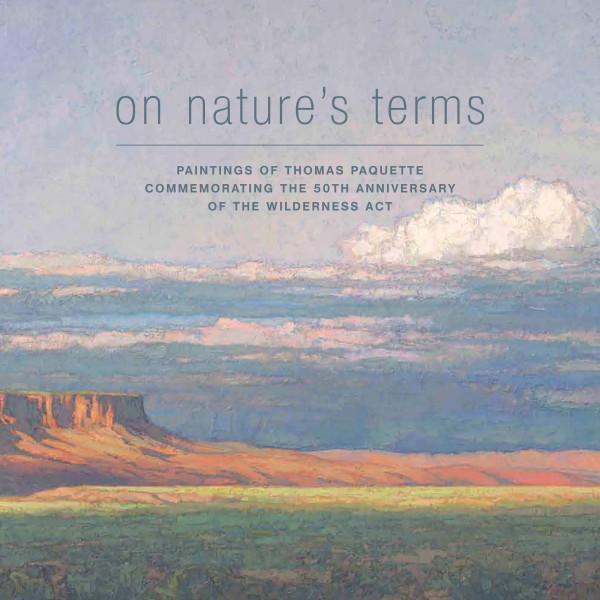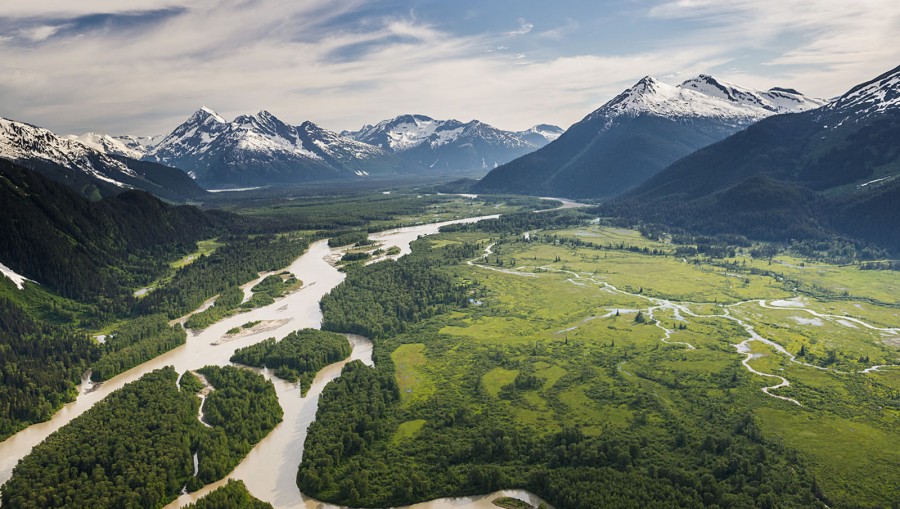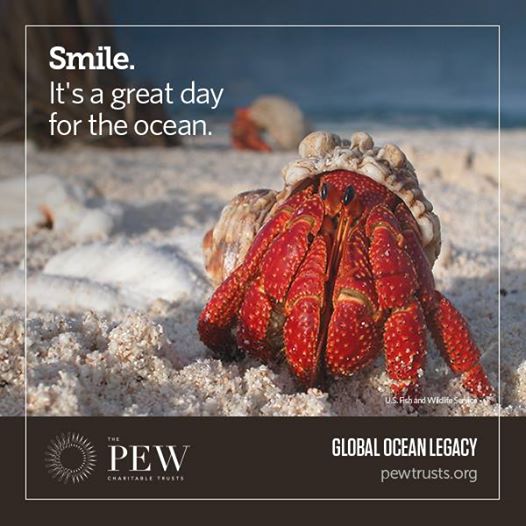
Thomas Paquette, a painter from PA, spent three years on the road visiting wilderness areas across the country. His exhibition, “on nature’s terms” commemorates the 50th Anniversary of the Wilderness Act. Thomas was kind enough to share his book with us, and answer a few questions about his relationship with Wilderness:
How does wilderness inspire your work?
When I paint a landscape I think not of what it looks like, but how it acts. I am much more concerned with giving my paintings the feeling of life and process, as though it were a living extension of the subject. The slow grind of geology is my best teacher when paintings take years to complete. When I get to a point where the only good solution is to scrape off hours, days, or weeks of work and begin again, I borrow a lesson from the regeneration of forests that comes after a fire or even a landslide. New-fallen snow. I let the paint grow where other artists would prune, only because I would maintain that most times, it grows best growing wild.
Why do you paint wilderness areas?
I have always been interested in the natural world, and even studied to be a naturalist for a while. It’s an obvious fact that there is literally nothing I could choose to paint from experience that is not of this earth. But it is those places where humanity has least impact that have always struck me as holding the most significance. They are for me places that hold mysteries to be explored, places that hint of our deepest roots. I found myself going further into the process of the earth and life for my inspiration, leading me of course to wilderness areas. And when the fiftieth anniversary of the Wilderness Act was coming up, I felt focusing exclusively on designated wilderness areas was well worth spending a couple years on anyway. I marveled that we can sometimes end up on the good side of Thoreau’s equation: “A man is rich in proportion to the number of things he can afford to let alone.”
Do you have a favorite wilderness area? Which one, and why?
Ha. A trick question. As an artist I get a little queasy when asked what my favorite color is, too. The answer is, it depends on what’s next to it. Sometimes an experience is just right. For instance, I deeply and quickly absorbed the value of nature high in the San Jacinto Wilderness after spending time in the heat and haute bustle of Palm Springs, just down the mountain. I can’t really compare that to the hulking overwhelmingness of a place like Cloud Peak Wilderness in Wyoming, a place where the whole cold galaxy seemed a next door neighbor. I sure enjoyed them for what they were, and the different experiences they provided. But sometimes it is simply the relief from need they provide, the break from civilization and mechanization, that proves to be the most favorite “place”.
What are you most excited about painting next?
I am going thematically and geographically in two directions at once, to water and to desert. In preparing for the wilderness show, when most of my travel was done and the major paintings were well underway (they can take an unexpectedly long time to complete, often), I noticed that I had somehow missed painting much desert, an important aspect of our country. So after I went to the grand opening of the show in California, I took some time in the Mojave and Death Valley environs, just to round things out. Being from a wet part of the country, making some serious efforts with the subject of desert always proves interesting. But this is sharing my easels now with work for my next solo museum show which focuses on the importance of water, opening at the Rockwell Museum of Art in early 2015.



